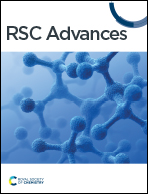Phytoremediative adsorption methodologies to decontaminate water from dyes and organic pollutants
Abstract
Persistent organic pollutants and dyes cause major problems during ecofriendly wastewater treatment. To overcome this huge problem, several techniques have been considered and in practice for the safe disposal of organic pollutants in recent years; some of them are discussed and compared herein. This review focuses on new trends for wastewater treatment and compares them with certain other techniques alongside their pros and cons; adsorption is considered the safest among them. Adsorbents derived from agri-wastes have good capacity for the removal of these contaminants owing to their great sorption capacity, high reusability, easy operation, etc. Sometimes they need some modifications for the removal of dyes, which are also discussed in this review. This capacity of adsorbents to chelate dye molecules can be affected by factors, such as pH, the concentration of dyes and adsorbents, and temperature of the system. pH has direct influence on the ionization potential and charge on the outer surface of adsorbents. The findings on isotherms, kinetics, and desorption of plant waste-based biomaterials that are safe for the ecosystem and user friendly and are used for hazardous contaminant removal from water are summarized in this review. Finally, conclusions and future perspectives are presented, and some other materials, such as CNTs and MOFs, are also discussed as efficient adsorbents for eliminating dyes from wastewater. Finally, it is predicted that the adsorption of dyes is a more feasible solution for this dye pollution problem.

- This article is part of the themed collection: 2023 Reviews in RSC Advances


 Please wait while we load your content...
Please wait while we load your content...